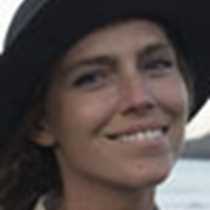Guests onboard National Geographic Endeavour II spent the day exploring Santiago Island. We disembarked for an early morning photo walk at Espumilla Beach, and guests enjoyed picture-perfect lighting. We observed sea turtle activity, including tracks and nests. Blue-footed boobies and brown pelicans were busy diving along the shoreline. Many guests opted to go on a photo walk, where a certified photo instructor gave tips to photographers. After our walk, we returned to the ship for breakfast.
Guests had the opportunity to participate in a variety of excursions after breakfast, including kayaking, paddleboarding, glass-bottom boating, and snorkeling. All activities took place at Buccaneer’s Cove, a sheltered area with a wide variety of wildlife. This site is a wonderful place to see tropical fish species, rays, and sharks. Guests returned to the ship for a riveting lecture on the interesting life of Charles Darwin. Darwin spent most of his time in the Galapagos on Santiago Island.
After lunch, we disembarked at Puerto Egas. Guests had the option to go on a natural history walk or enjoy snorkeling from the beach. Lindblad adopted Santiago Island in 2006 to help preserve the island’s precious wildlife. Efforts were made to eradicate the invasive species that decimated the populations of giant tortoises and land iguanas. Today, the national park has repatriated many Galapagos land iguanas to the island. We hope to see them breeding and nesting in the near future.
Puerto Egas is home to the Galapagos fur seal as well. We often see fur seals swimming through a system of grottos. There are no true seals in the Galapagos Islands. However, the Galapagos fur seal has an extra layer of fur coveted by sealers passing through the island in the 19th century. The ancestral species of the Galapagos fur seal comes from the south, whereas the ancestral species of the Galapagos sea lion hails from the north.
Photo Caption: A Galapagos sea lion nurses on the sand at Puerto Egas. The Galapagos sea lion is endemic to the archipelago, having speciated from the California sea lion less than one million years ago. They are a fan favorite for guests and locals alike in the Galapagos. Photo by Alexandra Widman







